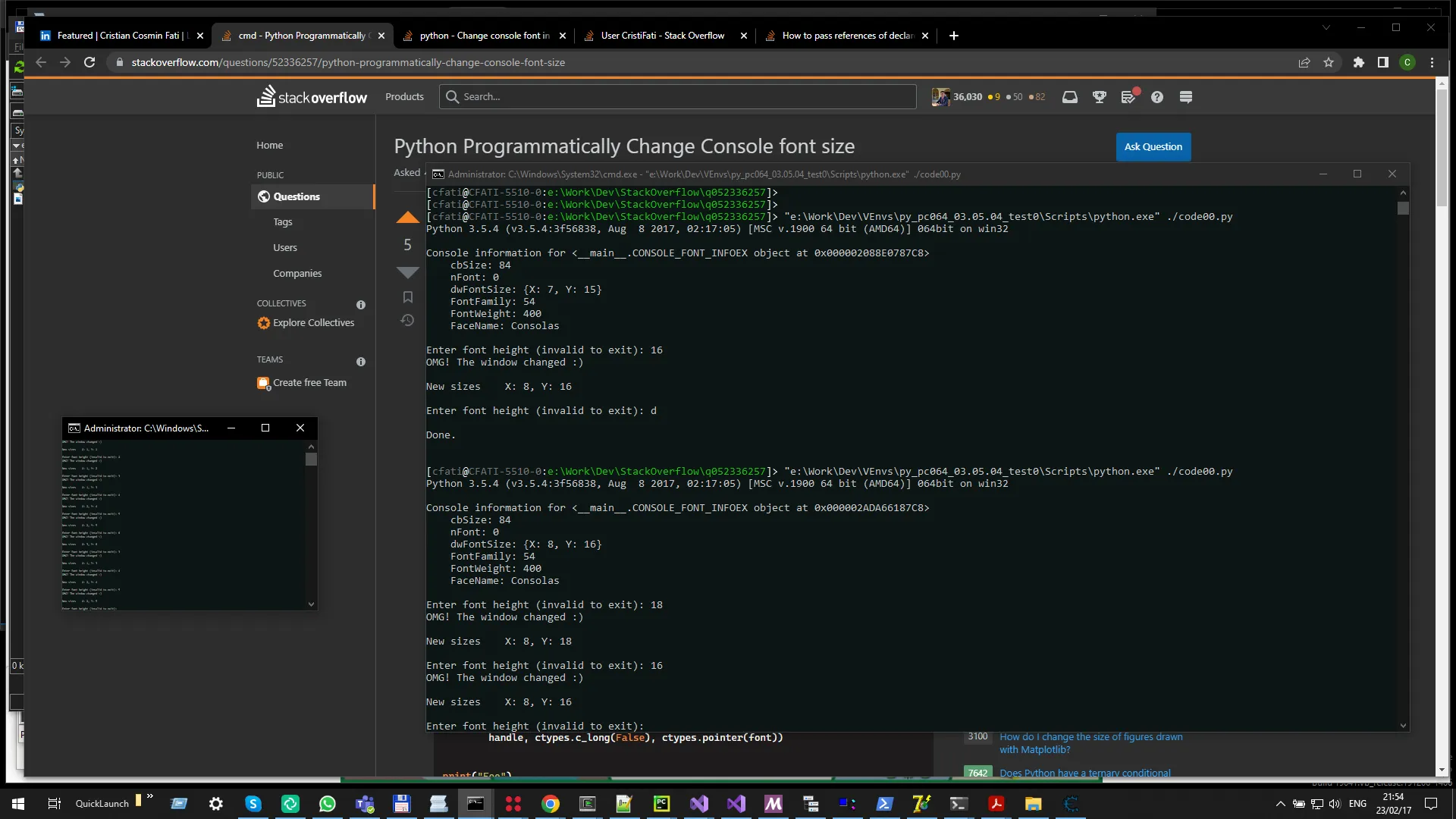然而,无论我调整什么值,似乎都无法对字体大小进行任何控制,而且由于某种原因,运行此脚本时打开的控制台非常宽。
我不知道ctypes如何工作 - 我想做的就是从Python内部修改控制台字体的大小。
有没有实际可行的解决方案?
import ctypes
LF_FACESIZE = 32
STD_OUTPUT_HANDLE = -11
class COORD(ctypes.Structure):
_fields_ = [("X", ctypes.c_short), ("Y", ctypes.c_short)]
class CONSOLE_FONT_INFOEX(ctypes.Structure):
_fields_ = [("cbSize", ctypes.c_ulong),
("nFont", ctypes.c_ulong),
("dwFontSize", COORD),
("FontFamily", ctypes.c_uint),
("FontWeight", ctypes.c_uint),
("FaceName", ctypes.c_wchar * LF_FACESIZE)]
font = CONSOLE_FONT_INFOEX()
font.cbSize = ctypes.sizeof(CONSOLE_FONT_INFOEX)
font.nFont = 12
font.dwFontSize.X = 11
font.dwFontSize.Y = 18
font.FontFamily = 54
font.FontWeight = 400
font.FaceName = "Lucida Console"
handle = ctypes.windll.kernel32.GetStdHandle(STD_OUTPUT_HANDLE)
ctypes.windll.kernel32.SetCurrentConsoleFontEx(
handle, ctypes.c_long(False), ctypes.pointer(font))
print("Foo")
